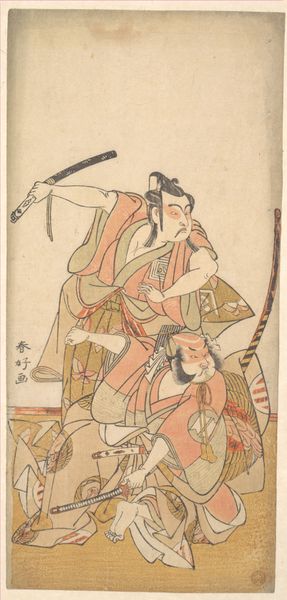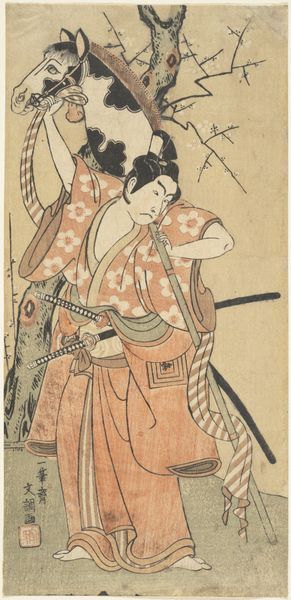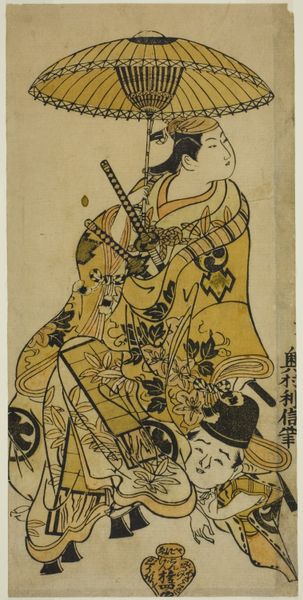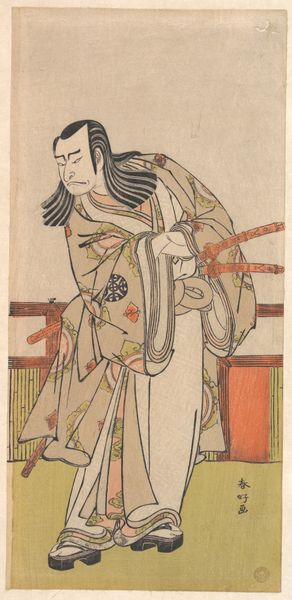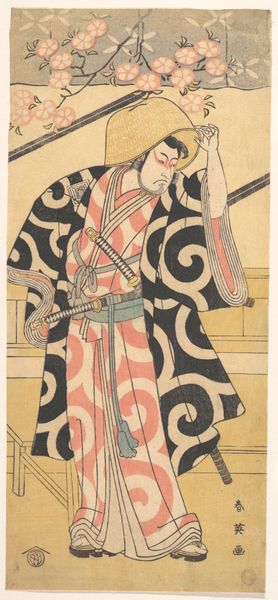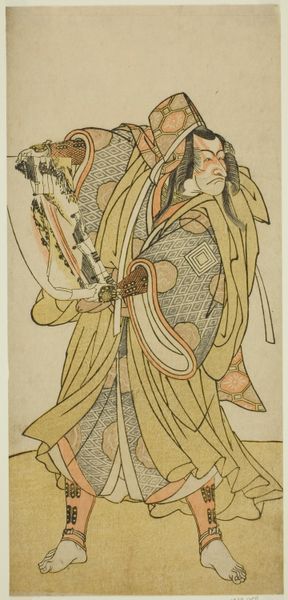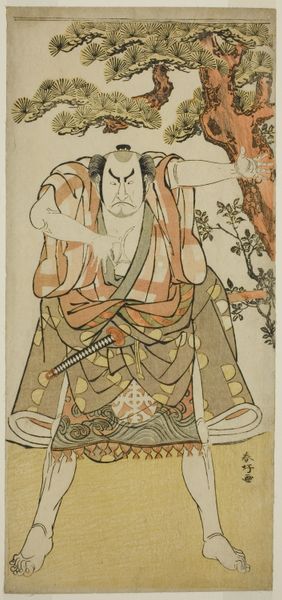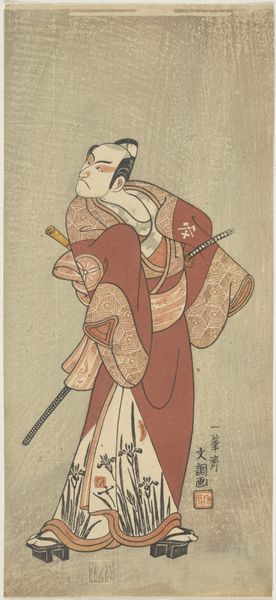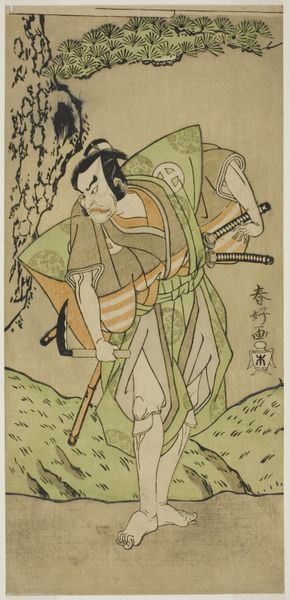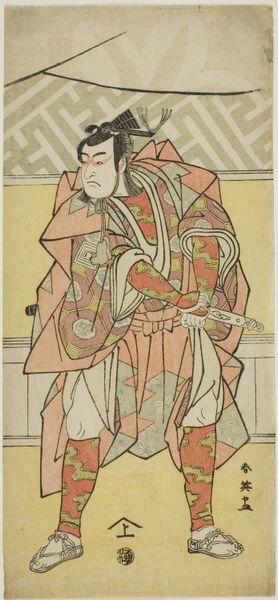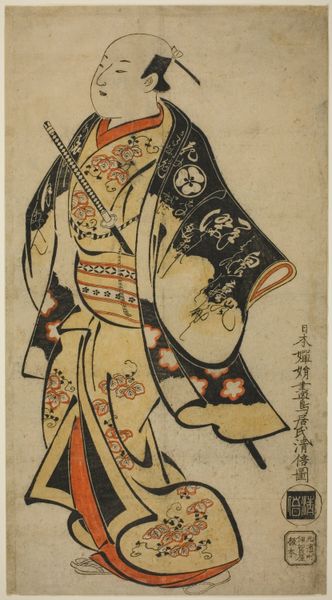
The Actor Nakamura Nakazo I as Matsuo-maru in the Play Sugawara Denju Tenarai Kagami, Performed at the Morita Theater in the Third Month, 1780 c. 1780
0:00
0:00
print, woodblock-print
#
portrait
# print
#
asian-art
#
ukiyo-e
#
japan
#
figuration
#
woodblock-print
#
genre-painting
Dimensions: 30.3 × 14.7 cm (11 15/16 × 5 13/16 in.)
Copyright: Public Domain
Editor: So, this woodblock print from around 1780, "The Actor Nakamura Nakazo I as Matsuo-maru…", depicts a kabuki actor, and the first thing that strikes me is how much character is etched onto his face. How does this fit into the broader artistic and cultural trends of the time? Curator: This ukiyo-e print offers a window into the complex relationship between art, theater, and society in 18th-century Japan. Kabuki wasn't just entertainment; it was a potent space for exploring social roles and even critiquing the established order. How does the artist use visual cues, like costume and expression, to convey social messaging within the print? Editor: Well, the actor's grimace is very expressive, especially coupled with the formal robes, suggesting conflict, maybe. But why use woodblock prints rather than paintings? Curator: Ukiyo-e prints democratized art. Paintings were often for the elite, but these prints, mass-produced and relatively affordable, brought the spectacle of kabuki and depictions of popular figures to a wider audience. They shaped and reflected public opinion and the rising merchant class, becoming a vital force in shaping urban culture. Does knowing that alter how you view the piece? Editor: It does! It’s not just a portrait; it's a statement about accessibility and representation, almost like a celebrity poster of the time. Were prints like this politically charged? Curator: Absolutely! The Tokugawa shogunate tried to regulate kabuki and ukiyo-e due to their influence. Depictions of actors, courtesans, and even samurai were carefully scrutinized. This print exists in a space between celebration and potential subversion. Seeing this play between art and regulation, what kind of audience do you imagine this was made for? Editor: I’d imagine for people who loved the theatre, people looking for connection with performers and other theatre-goers. Thank you, I’m finding this print so much more complex and relevant now. Curator: And I hope that understanding how social forces influence art makes it richer for you too.
Comments
No comments
Be the first to comment and join the conversation on the ultimate creative platform.
